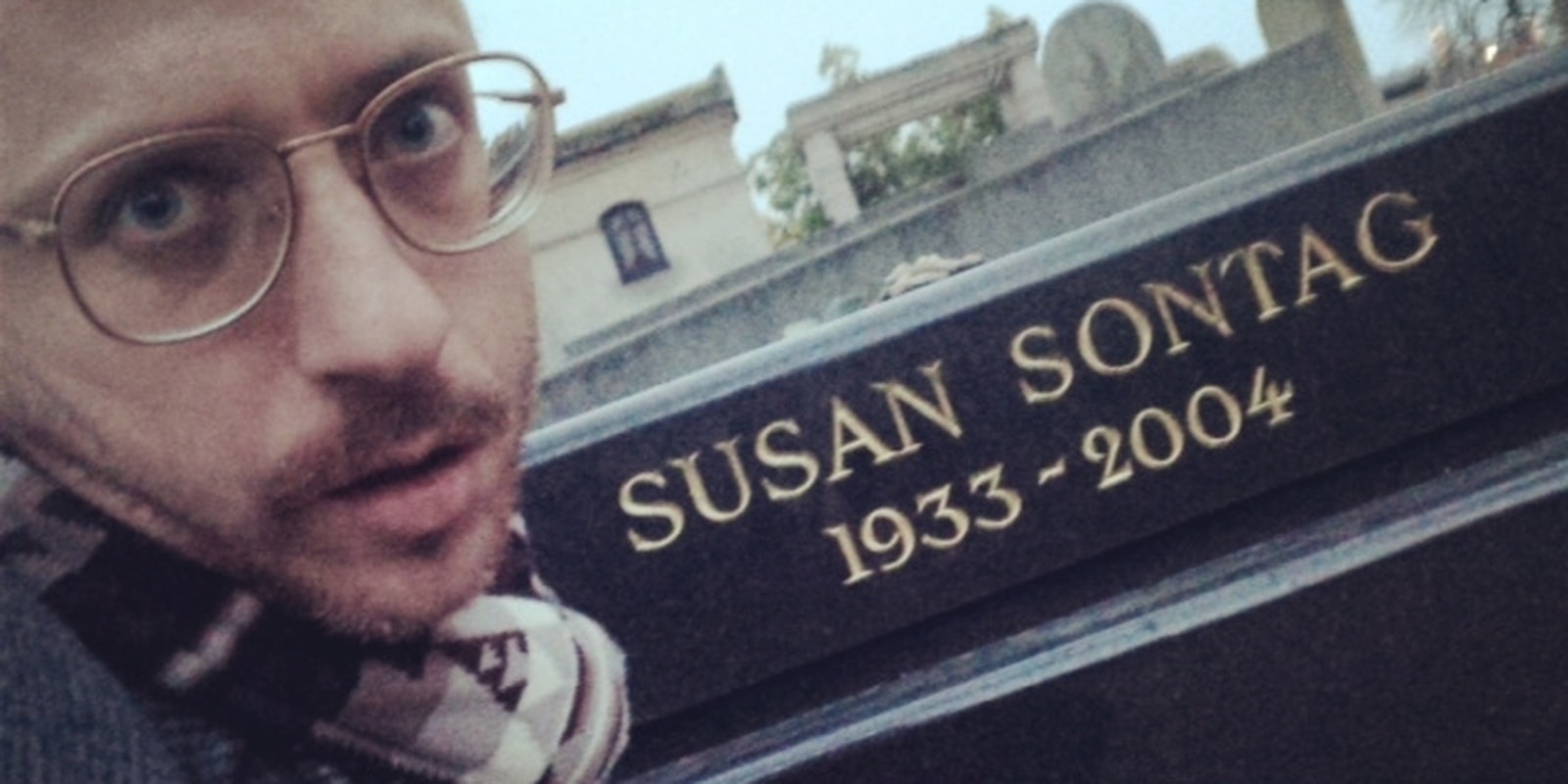There is a new thing happening on a nice, casual level right now: taking selfies with celebrity tombstones. It can take place in any cemetery in the world where notable figures are buried. These photos are called gravfies or, in short, gravies, or sometimes cemeselfies. Whichever, the act of going to a graveyard and mingling with the dead is the hip replacement for all of those tiring red-carpet selfies at award ceremonies and backstage selfies at concerts.
When they’re still alive, celebs can easily resist someone imposing a selfie pose on them. In death, though, they lie helpless in the ground for fans to come and fill their entire 16GB phones with photos taken with one hand stretched high above their cenotaph. While some kids get the kicks out of going to holocaust memorials and tagging their selfies #yolocaust, others just get it by entering renowned cemeteries and shoveling themselves in front of their headstone.
If you go to a resting place and don’t document yourself in it, it’s like the person lieing there never really died. But they did, and you must enshrine it on your phone, even if there’s a funeral going on at a nearby plot. Vines, Instagram videos, new LinkedIn profile pics—all must be posted on the spot, then, after every gravfie, the Wikipedia page of the deceased must be updated with a new photo. Why upload your dead fandom to Facebook when you can directly change the course of Wikihistory?
Susan Sontag
Sontag, died 2004, is buried at Cimetière du Montparnasse in Paris (3 Boulevard Edgar Quinet). Her grave is hard to find in the middle of this topsy-turvy crypt. When you see it, you’ll discover a black, heavy low mound, ideal for high-angle selfies. “Sonntag” in German, by the way, means Sunday—so it’s better to go there on Sundays and use the Hudson filter on Instagram if the photo is taken after twilight. Susan once said that her photo library is an archive of longings. Then she mentioned how she envies paranoid people since they actually believe other people are paying attention to them all the time. She never took a selfie herself, unfortunately.
Jean-Paul Sartre
Died 1980. Same cemetery as Sontag. For some reason, Sartre’s stone is always full of Paris metro tickets, single-ride each. I took a Vine selfie and then tweeted a series of tweaked memorable quotes of his that came to mind: 1) Hell is other followers. 2) Fascism is not defined by the number of its victims, but by the way it unfollows them. 3) She believed in nothing, only her skepticism kept her from being verified. 4) Nothingness haunts Flappy Birds. 5) I am responsible for nothing, for I am not the foundation of my feed. 6) I am condemned to be free of retweets. 7) I am a deleted tweet, Jupiter, and each deleted tweet invents its person. 8) I only know one church: the fb society of men.
Karl Marx
Died 1883. When he was exhausted of Marxism, he moved to the upper crust devil-may-care area of Kentish Town, north London. That led him to be buried in the nearby Highgate Cemetery (Swain’s Ln, N6 6PJ). I walked towards his mound, then suddenly disappeared into it, feeling myself swallowed in the airfoil of historical gravfiety (see Vine below). Marx has the most lavish stone of them all, with a face on it as huge as a statue. To show everyone that I’m a true Marxist, after visiting his mausoleum I opened a bank account in HSBC (because the bank’s color is red). I also started buying hoodies only in Marx & Spencer. From each according to his abilities, to each according to his greed. I always believed that history repeats itself, first as a single YouTube view, then as a click-farm generated series of views. Surveillance is now the opium of the masses.
Photo via Nimrod Kamer/Instagram


